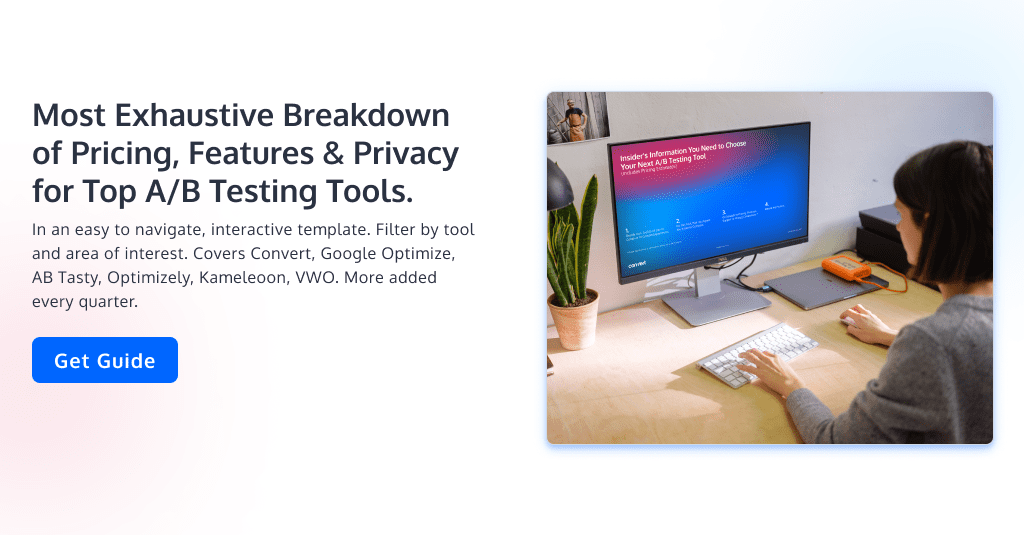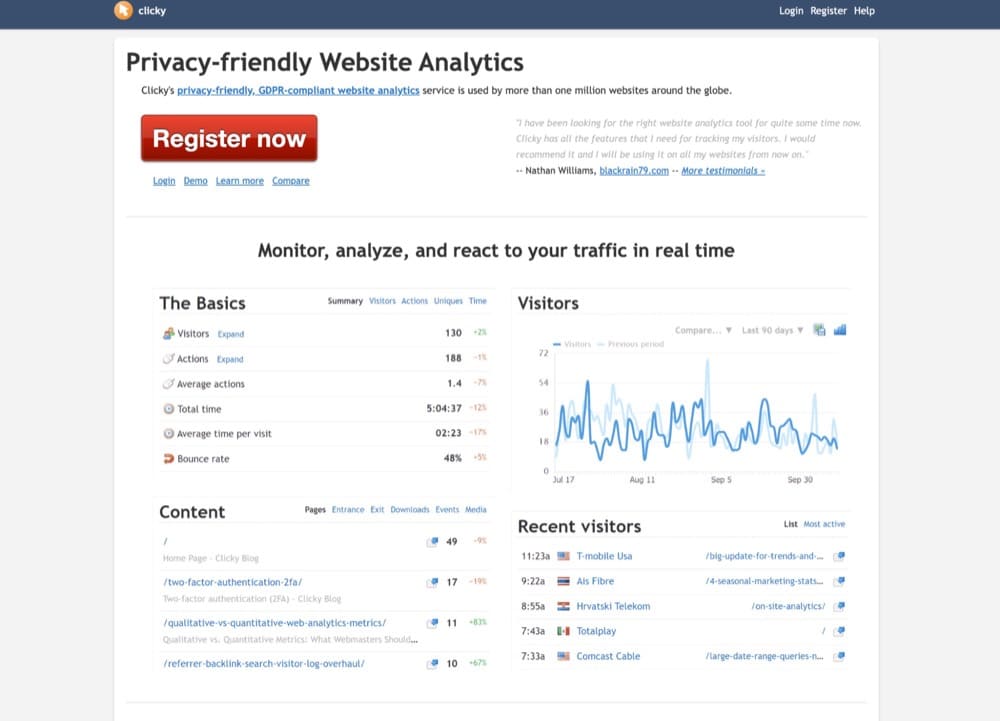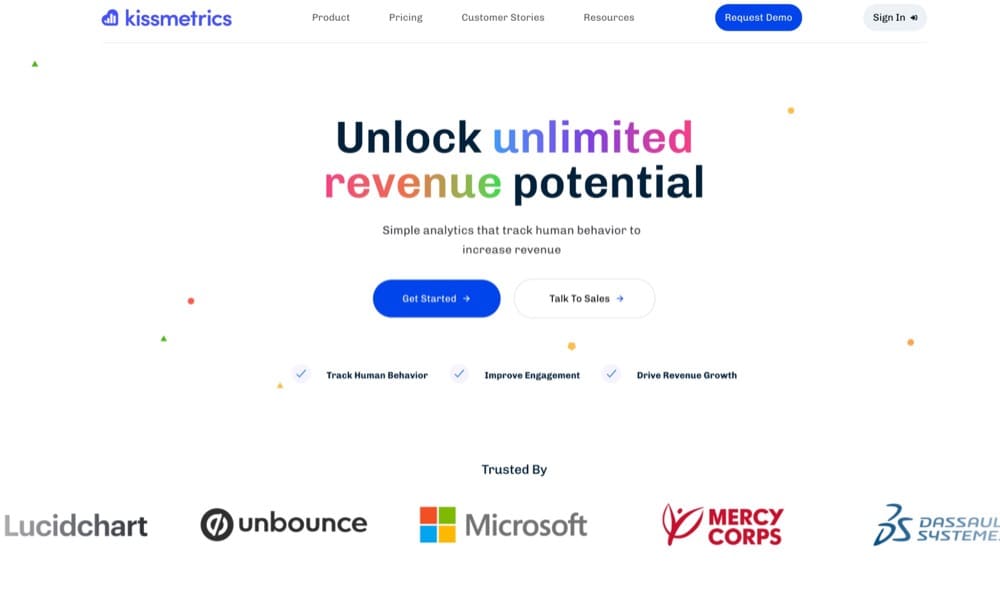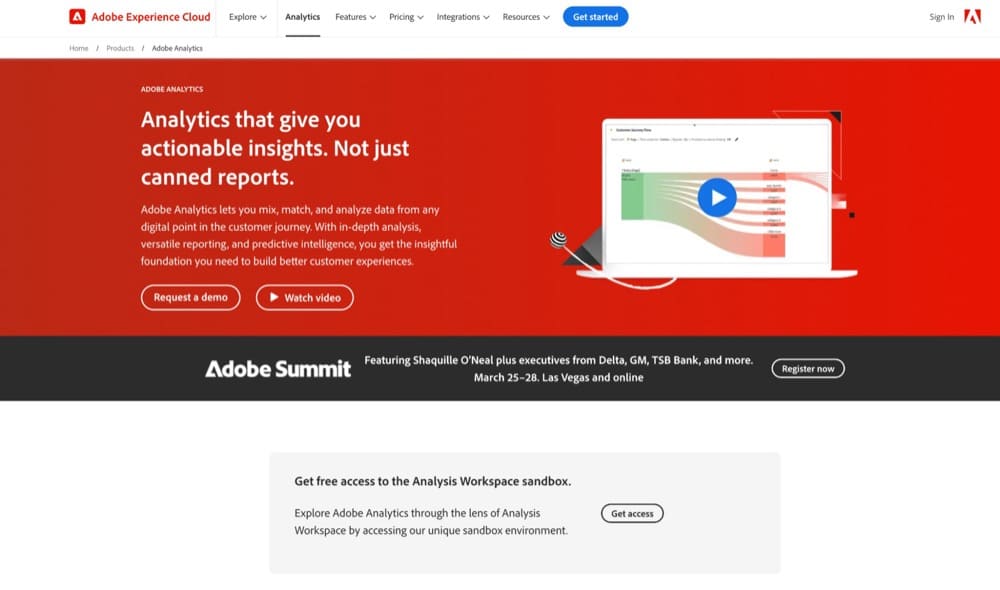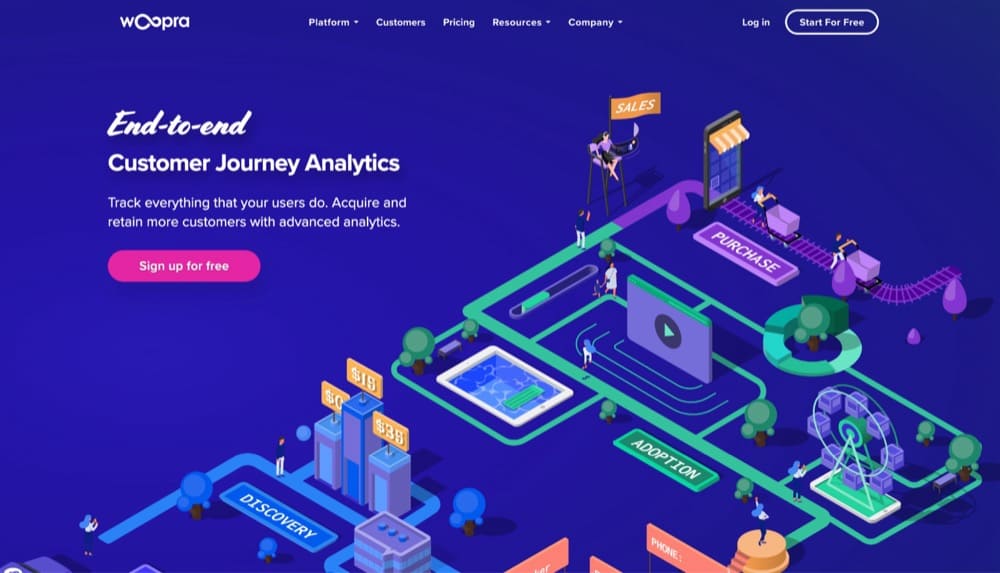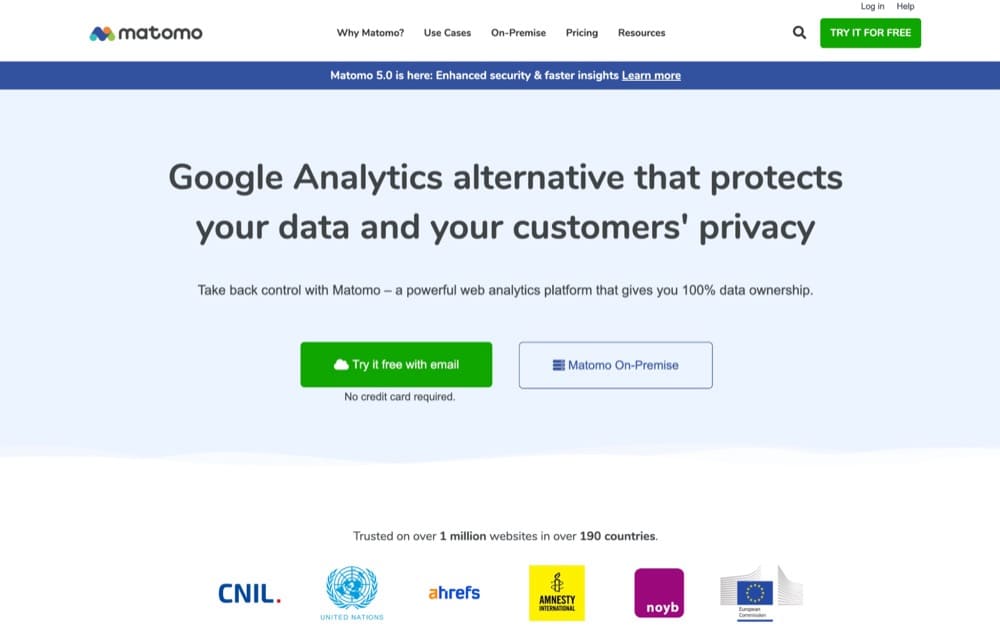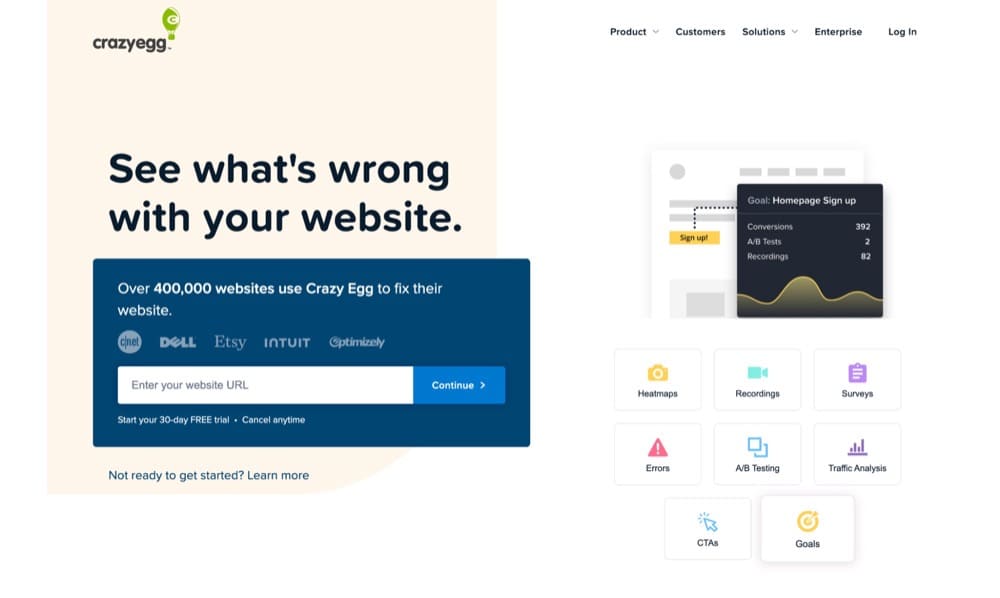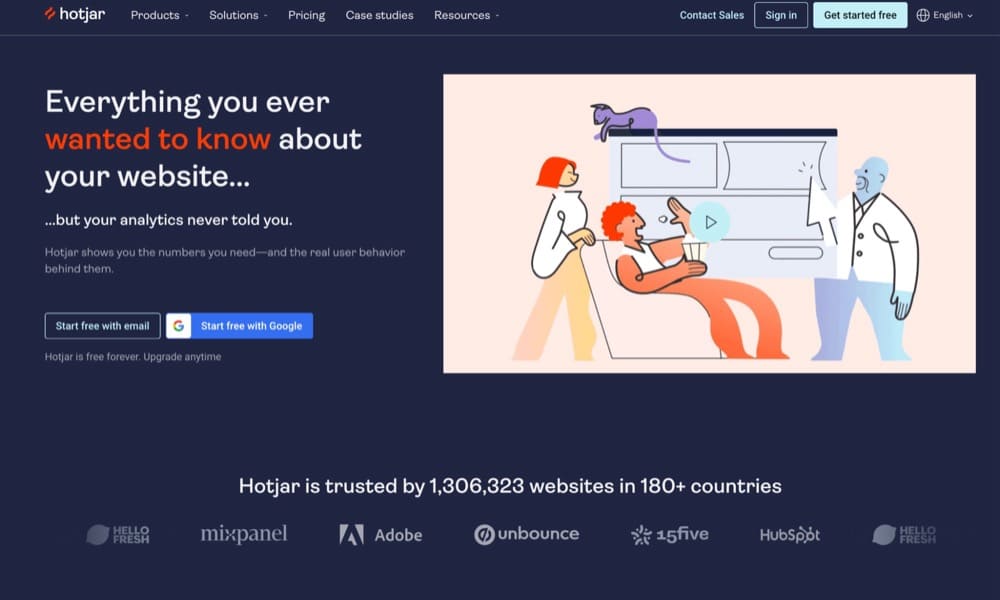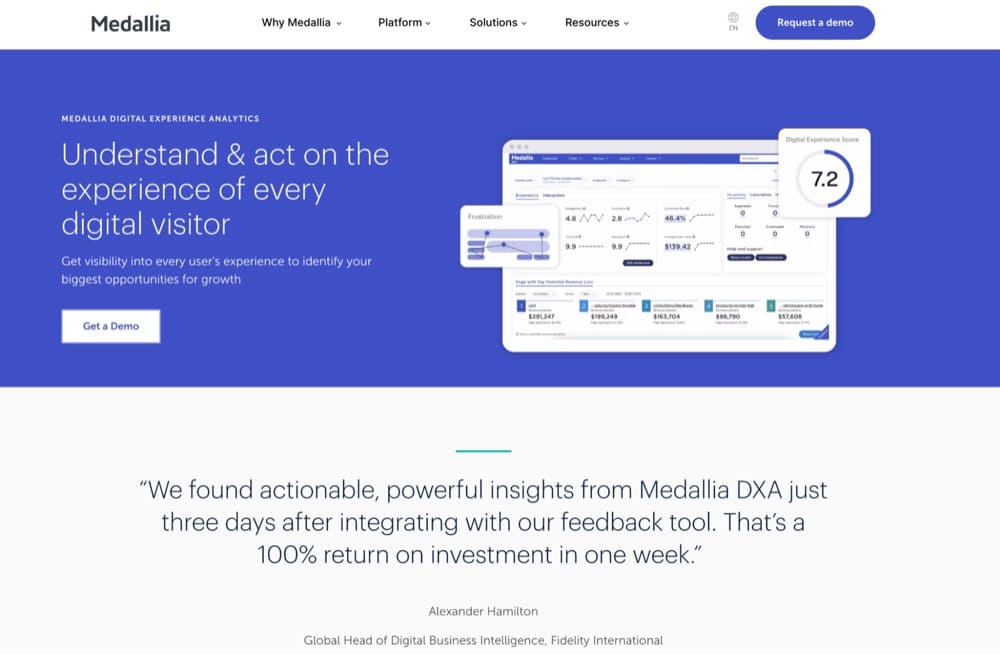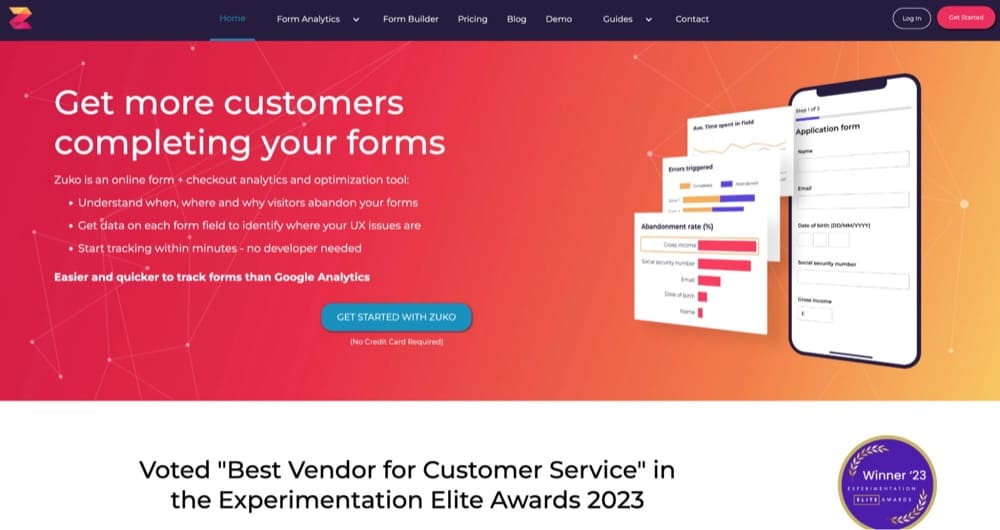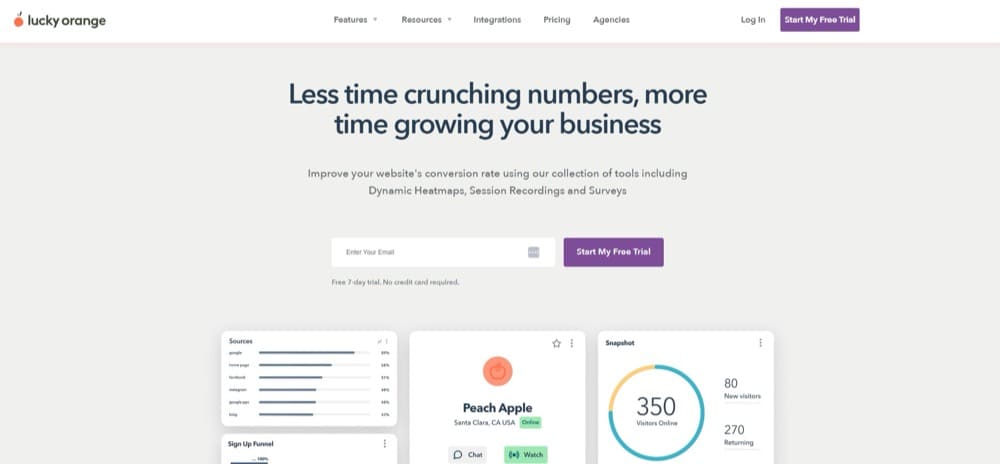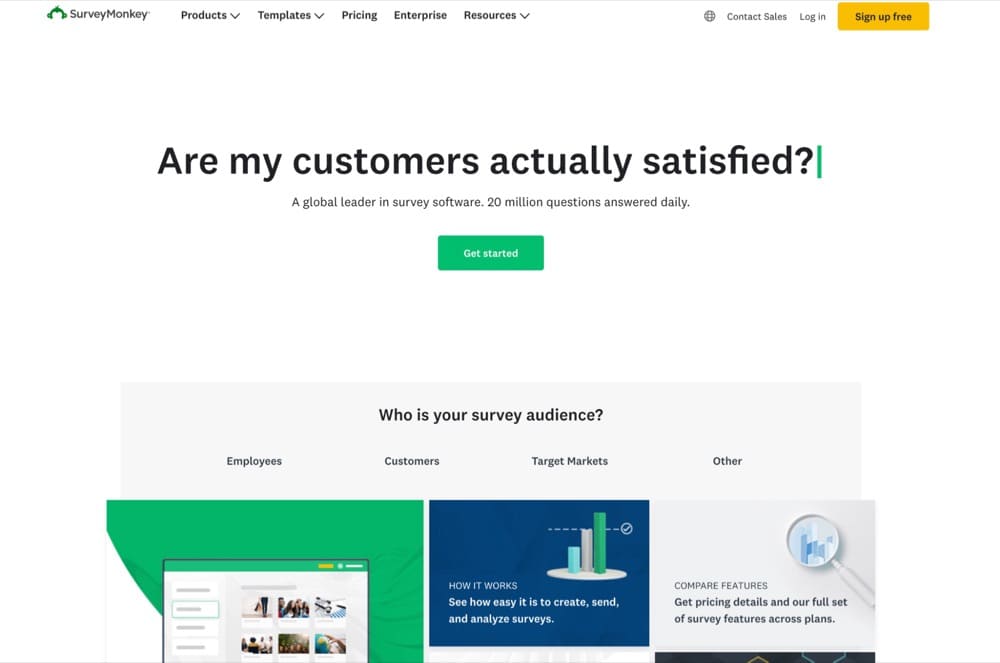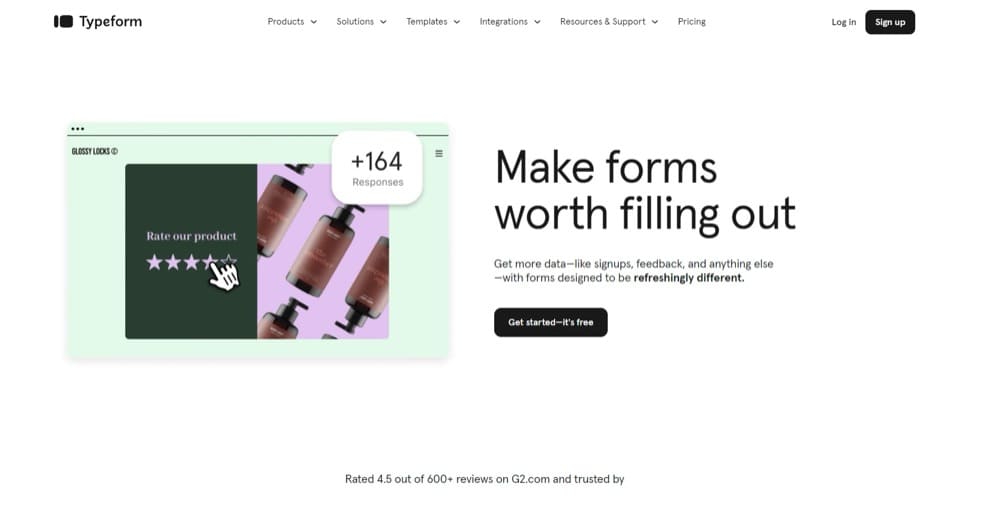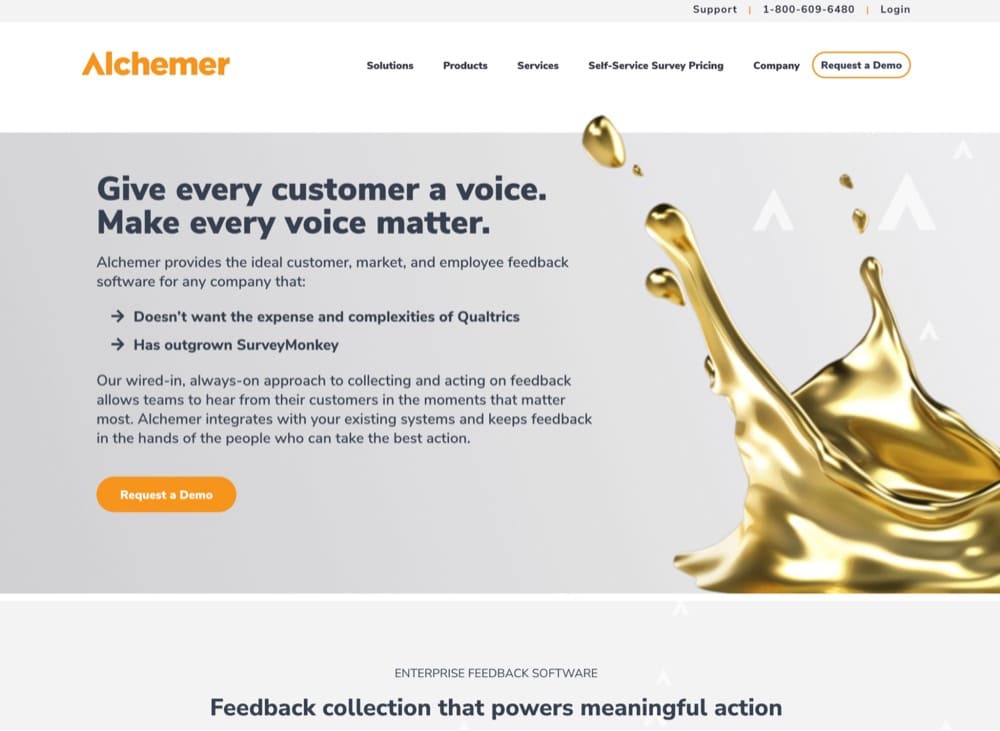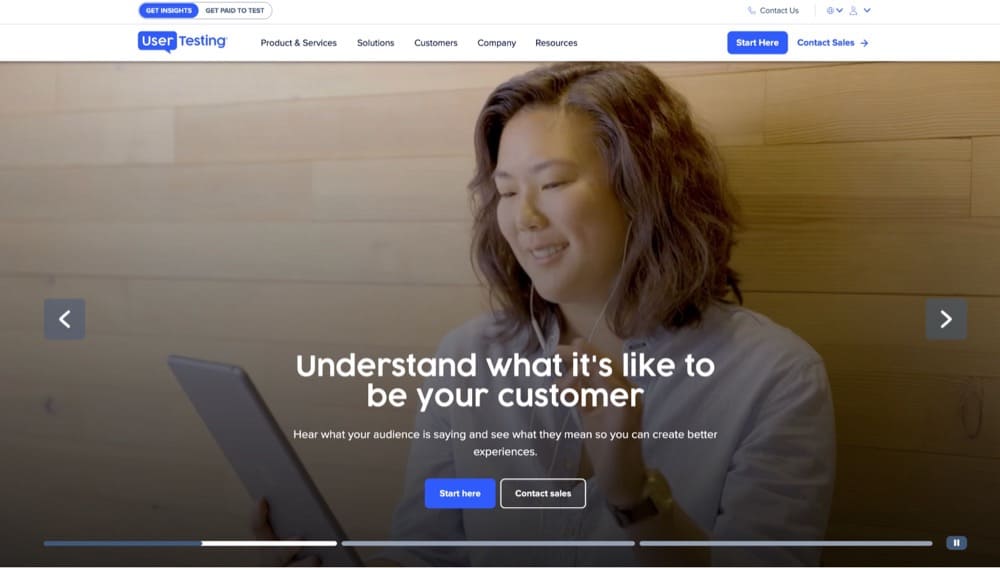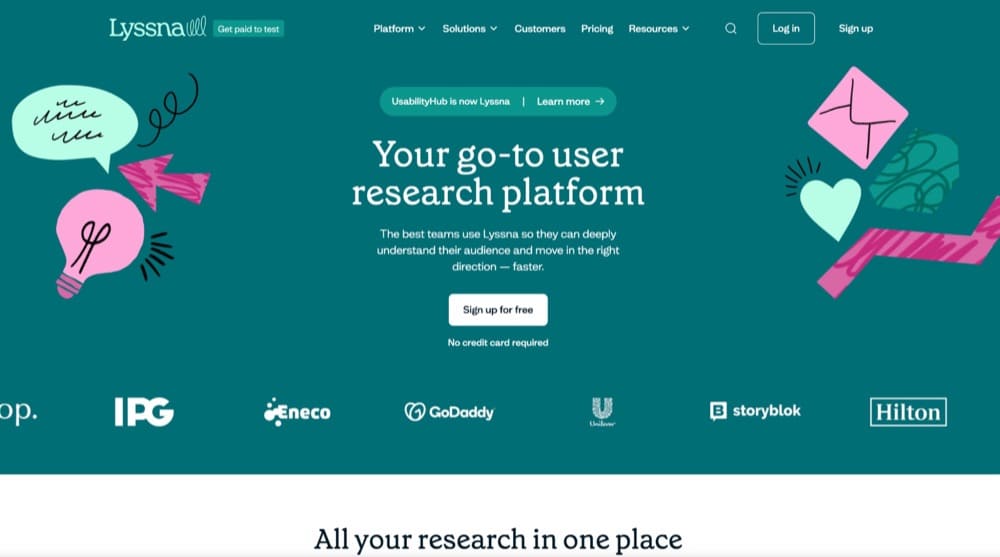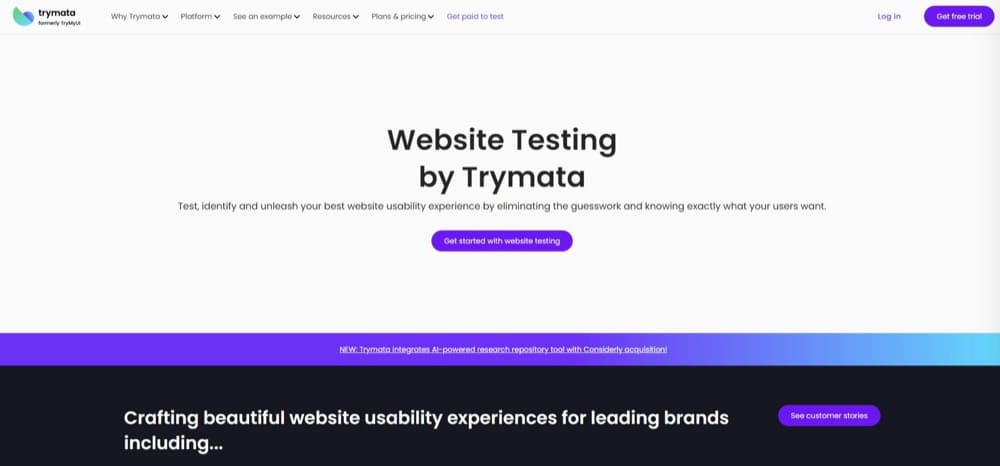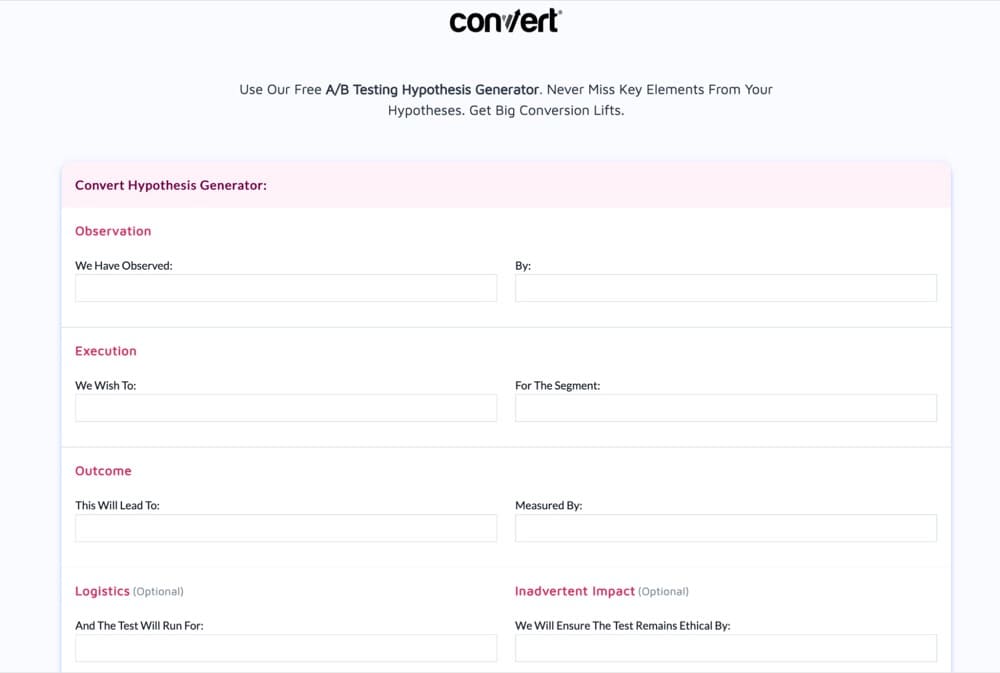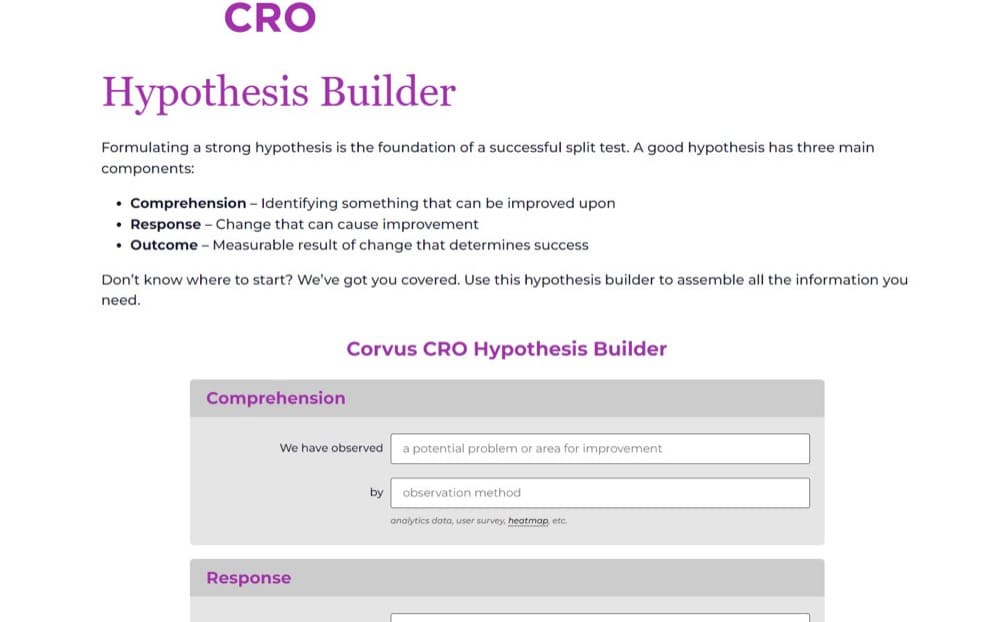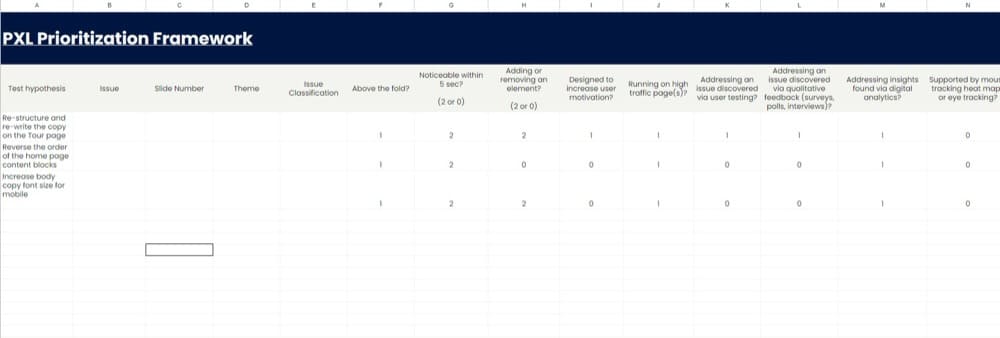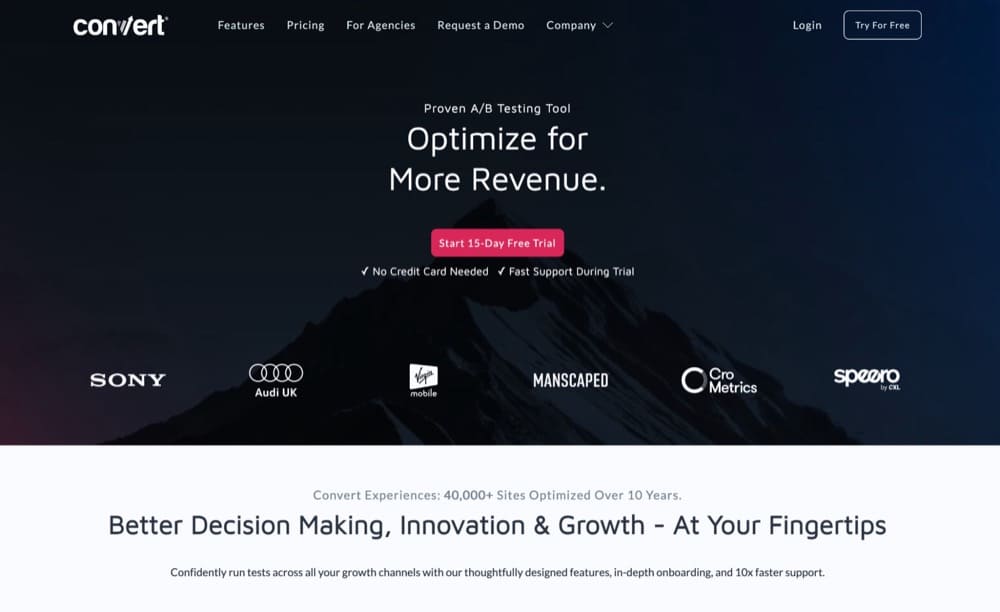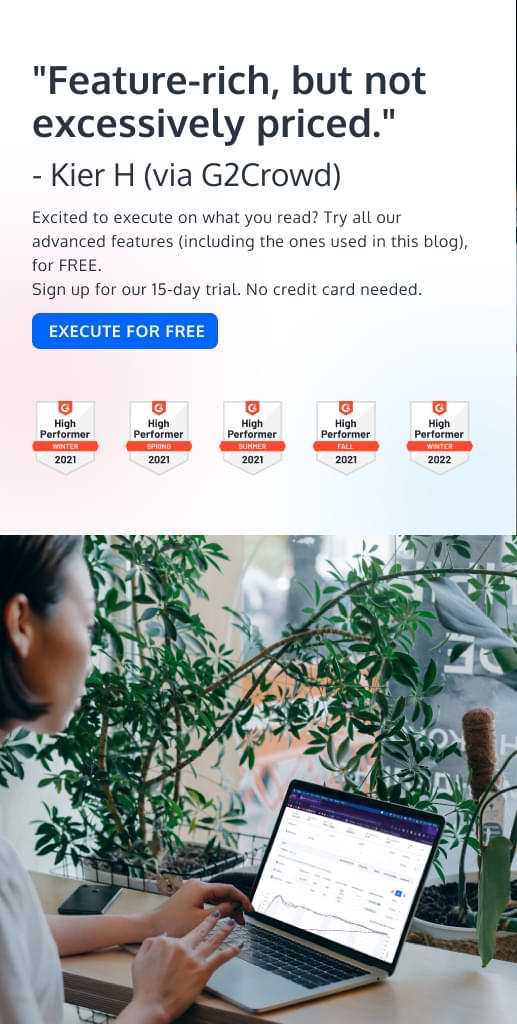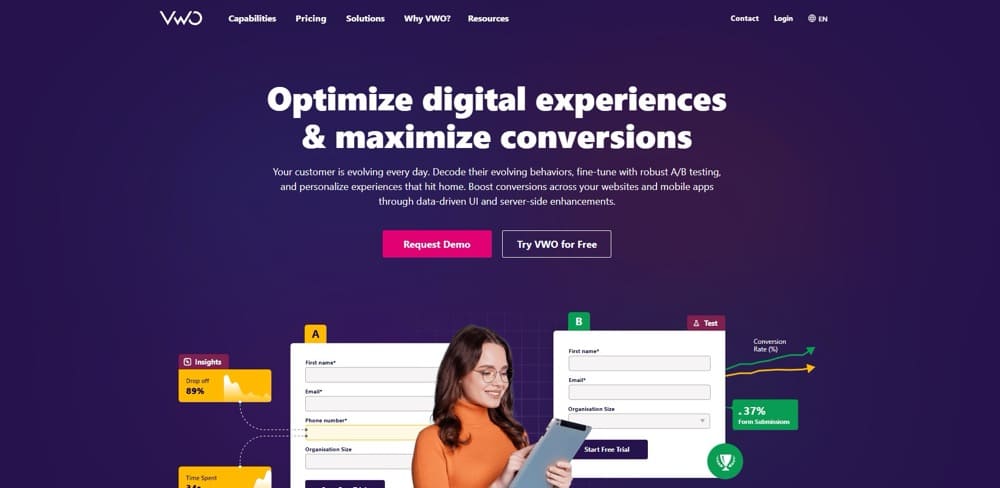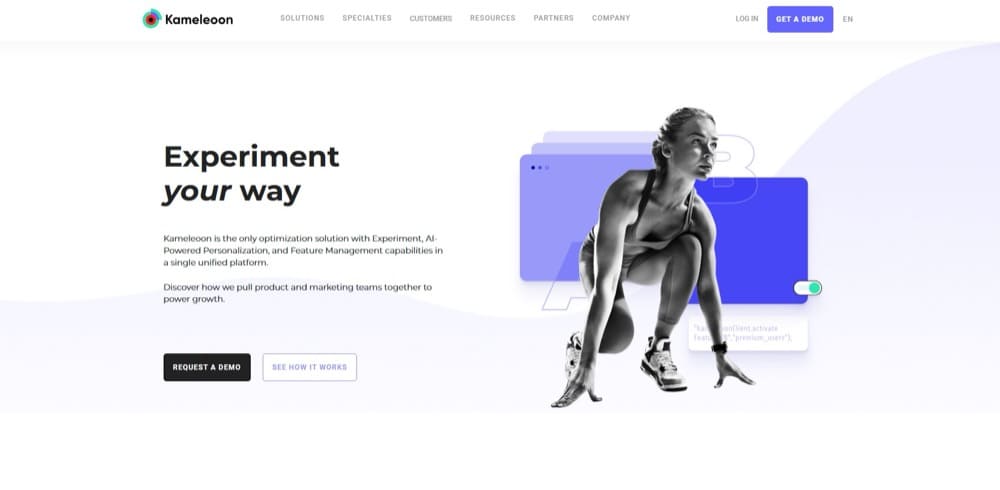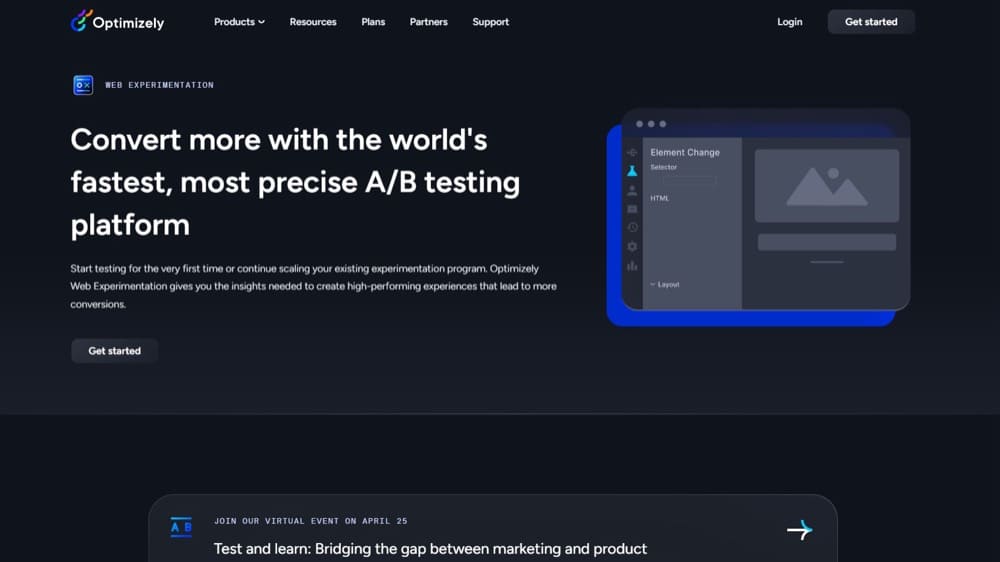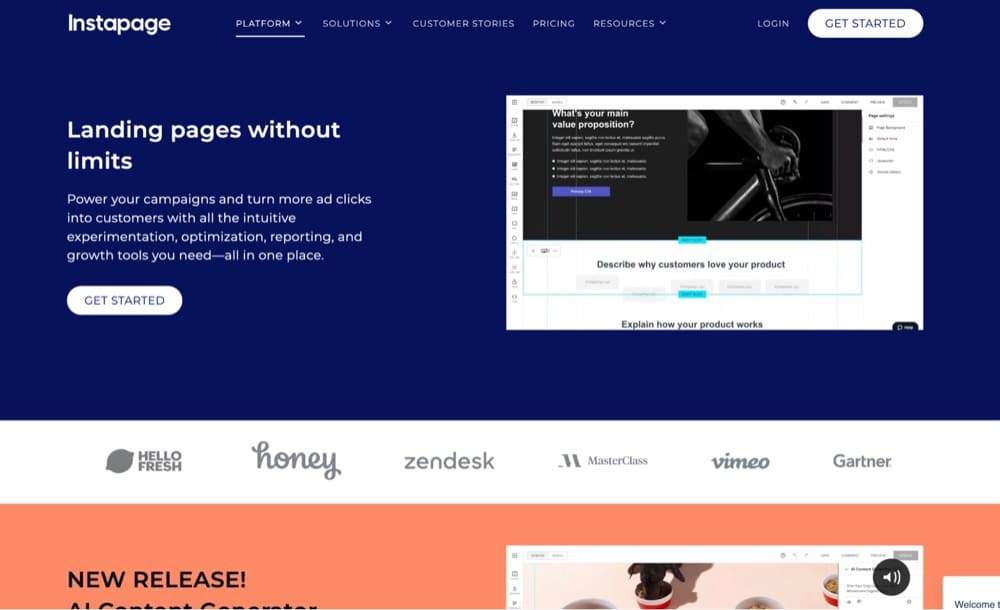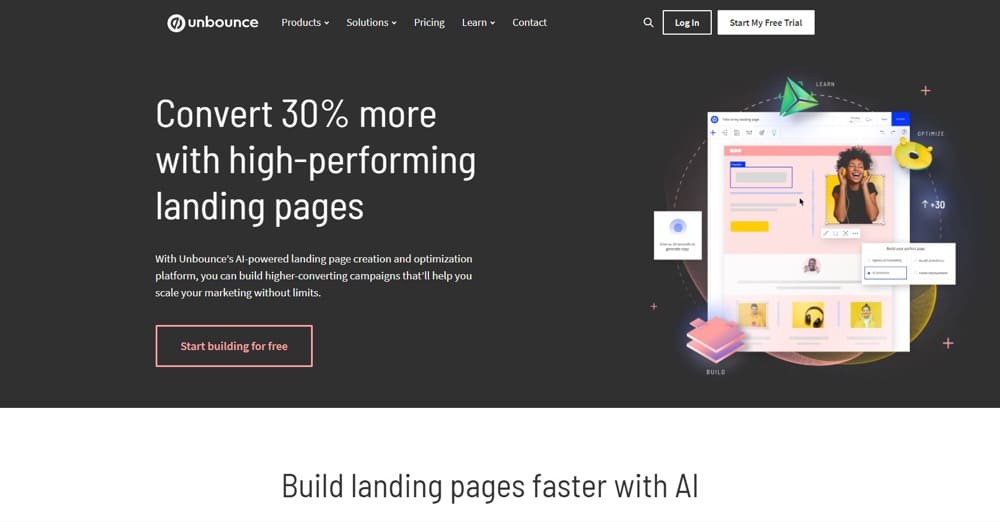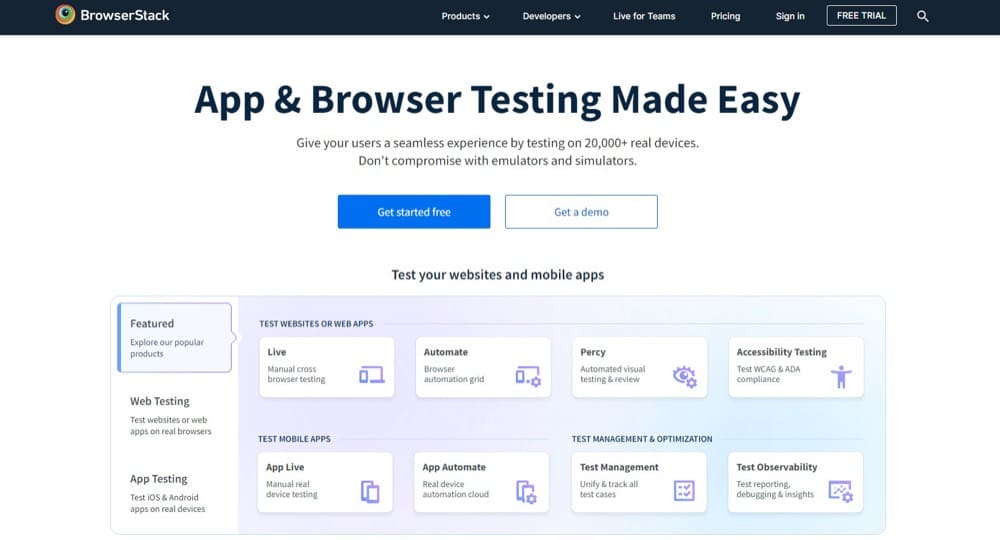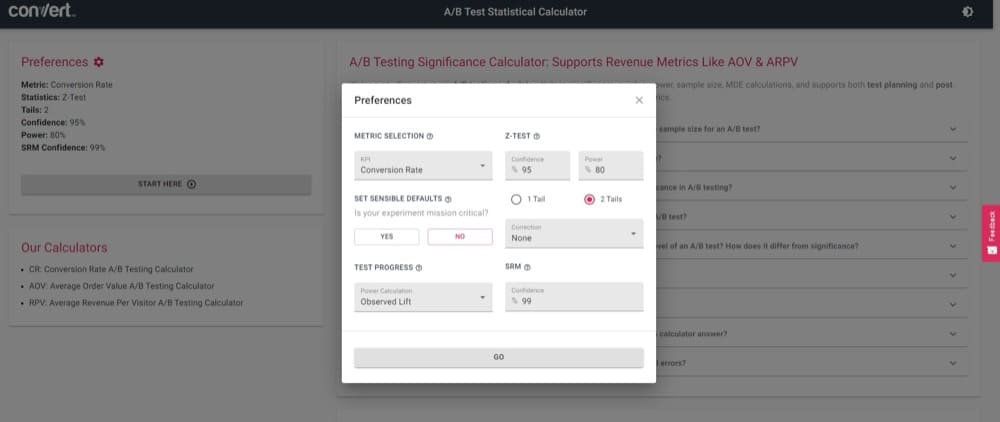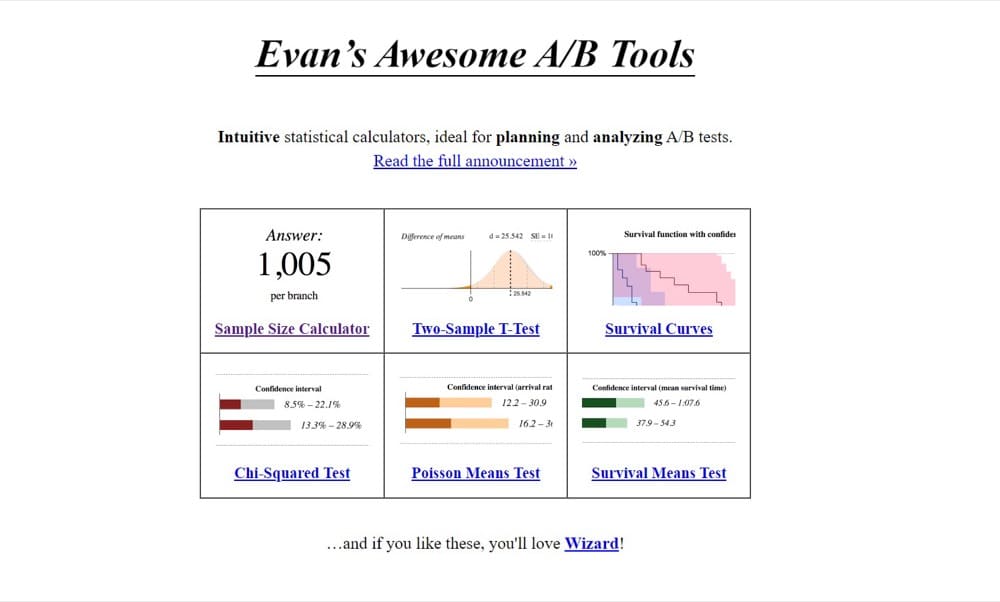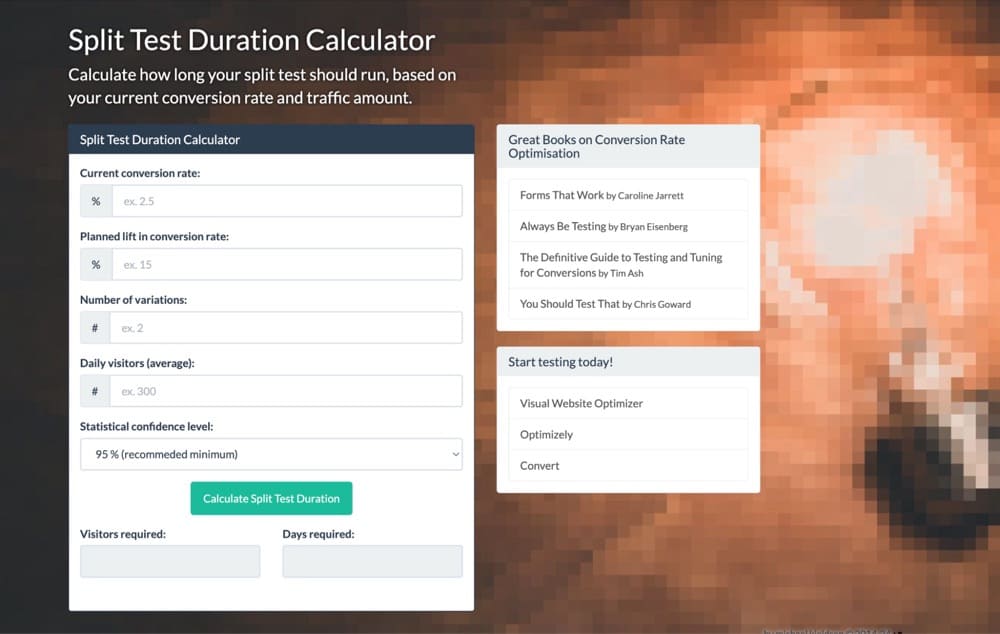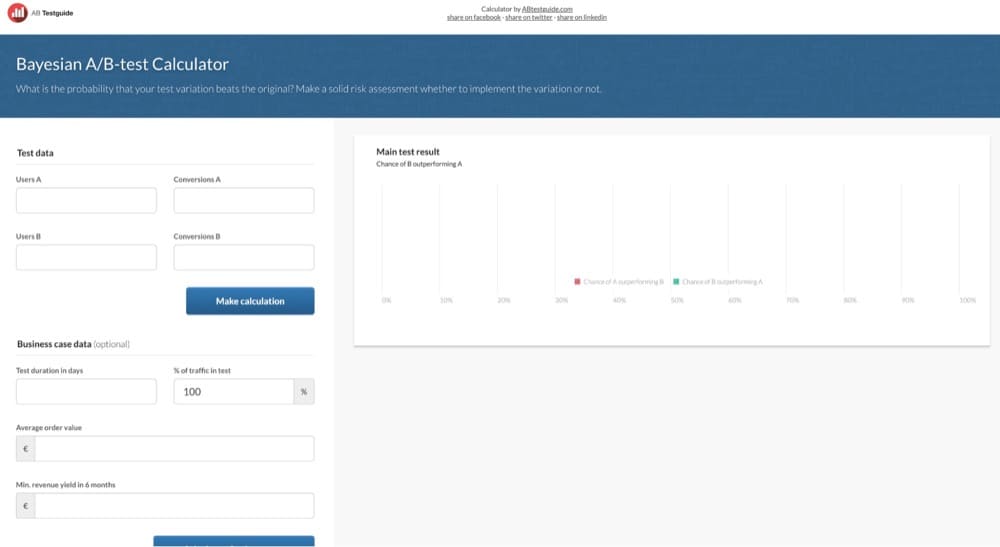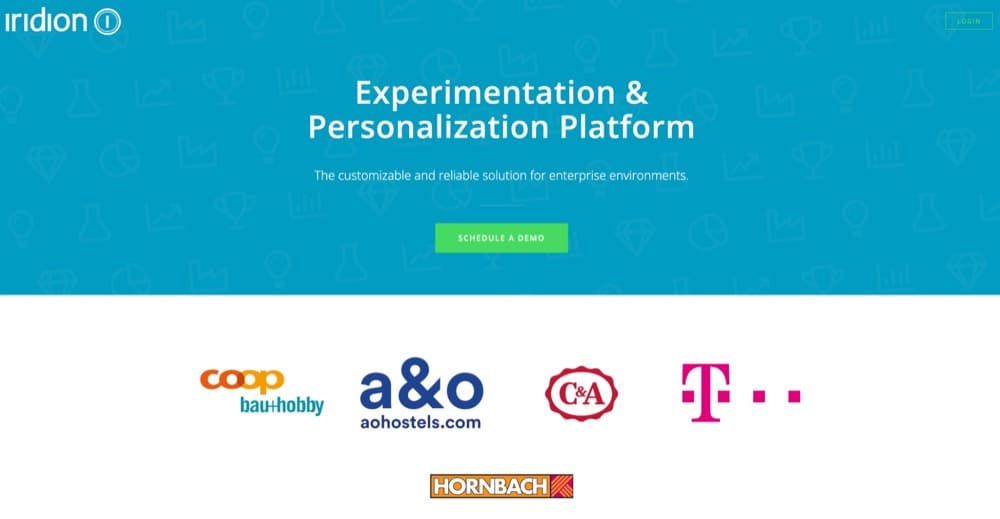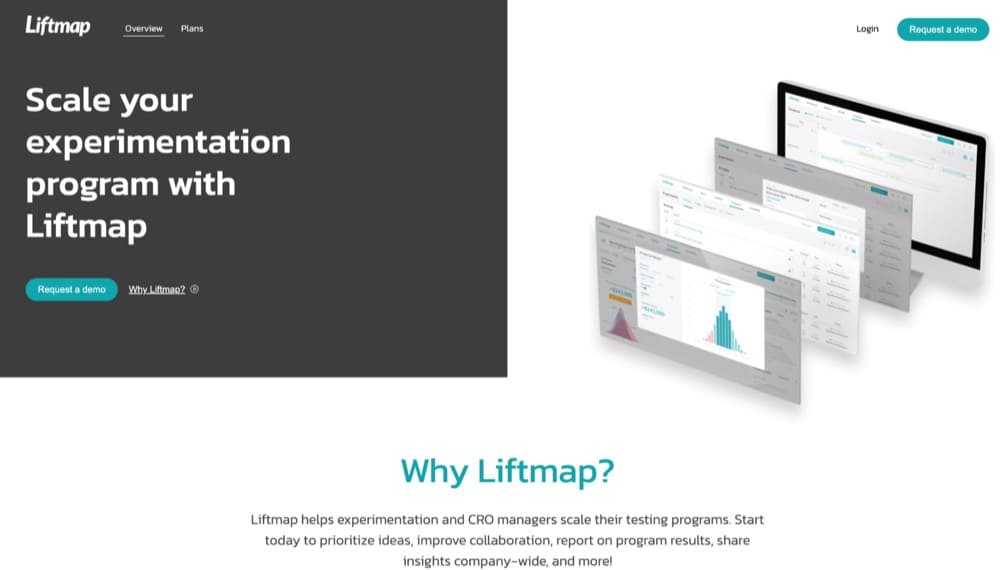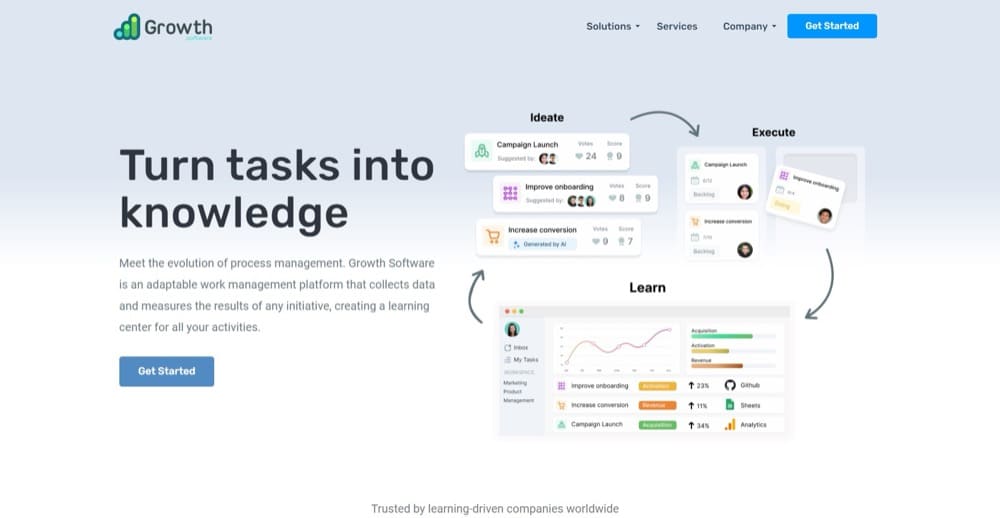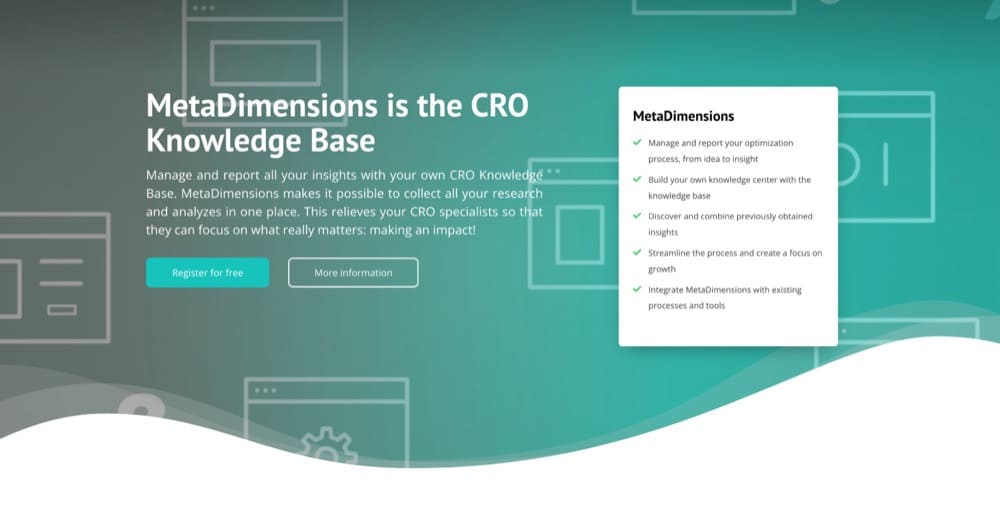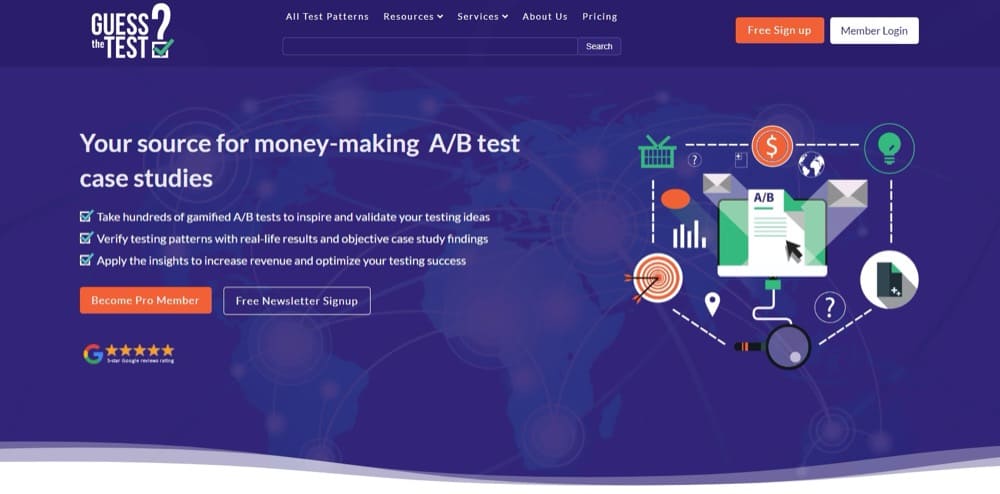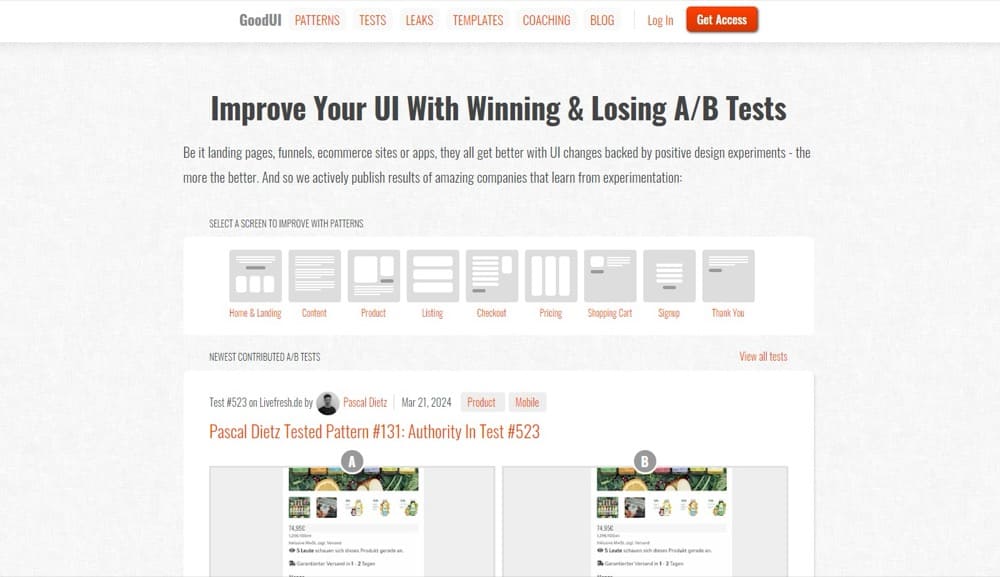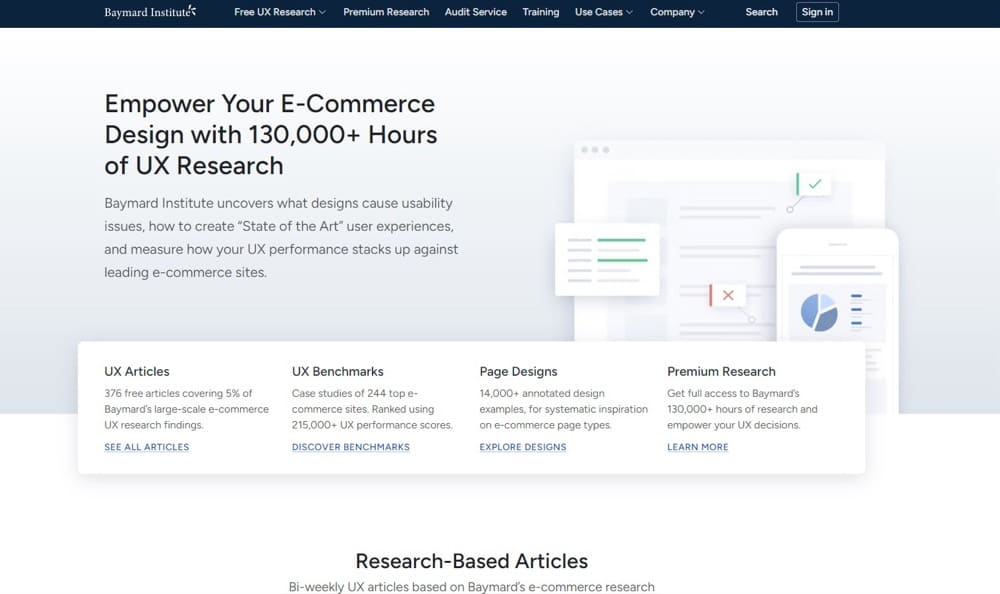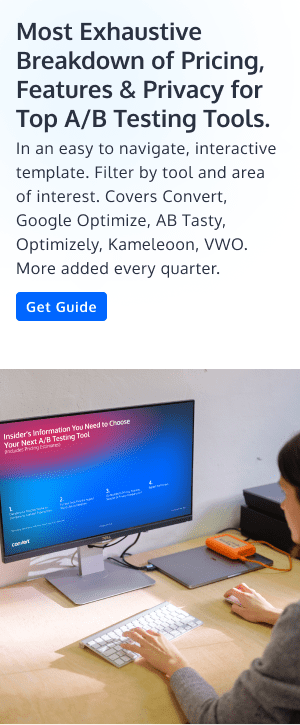45 Must-Have CRO Tools (Vetted for CRO Agencies)

It doesn’t matter whether you serve one CRO client or fifty, your CRO process always includes the same steps. And each step requires a specific set of tools.
What are CRO tools?
CRO tools are used to obtain information on how visitors are using your site, find areas people struggle with, and test ideas to increase conversion rates, optimize the user experience, and ultimately get more customers.
This is why you’ll find various types of tools on this list, including analytics, user research, project and knowledge management, statistical analyzers and calculators, and testing tools.
To help you streamline your conversion rate optimization processes, we’re sharing 45 top CRO tools the experts know and love, organized by the stages you can use them for.
When considering which tools to add to your optimization kit, evaluate them carefully based on the following criteria:
- Privacy compliance: You’re using user data at every step of the CRO process, which means the tools you use to collect your data must be user privacy compliant.
- Integrations: If your clients use 10+ analytics and user feedback tools, you can end up with 10 data silos. This makes ‘integrations’ a key feature to look for in your core A/B testing software. At Convert, we understand the frustrations of a CRO professional with processing data from so many sources, and so we support 90+ integrations. We also regularly add new integrations based on client requests.
- Security: When you install CRO software on your clients’ websites, it becomes your responsibility to ensure their websites don’t get breached because of your experiments.
- A multi-client friendly dashboard: When servicing multiple clients maintain your sanity by ensuring the conversion rate optimization tools give you the ability to switch between your different client accounts.
- Purpose-driven: As a techie, it is easy to get enamored with fancy software and tools, so make sure any tool you purchase has a clearly defined business benefit.
We vetted our list of tools with CRO agencies in mind.
Here goes…
Analytics Tools
The first step in optimizing websites is conducting research. You need to gather both quantitative and qualitative data.
Quantitative data tools like web analytics solutions tell you what’s happening on your website. In contrast, qualitative tools like user behavior analysis and surveys explain and give context to why it’s happening.
Here are some tools you can use on your clients’ websites and products to gather the data you need to form data-backed hypotheses for your experiments.
1. Google Analytics (GA4)
Google Analytics (GA4) is the #1 source for collecting website analytics data across devices and platforms. This data is used to understand user behavior with user journeys, page interactions, and funnel flow, track goals and events, and segment audiences by demographics, devices, traffic sources, etc.
It is free, but its premium version, Analytics 360, unlocks deeper insights and premium features.
2. Clicky Web Analytics
Clicky is a popular alternative to Google Analytics, but they can also work side by side.
With Clicky, you can monitor and analyze website traffic in real time. It also comes with heatmaps, uptime monitoring, and spam traffic detection, which help you get more insights into your clients’ traffic trends and behavior.
If your client operates in regions with strict data regulations, they will like this CRO tool. Clicky is known for its strong privacy-centric approach, offering features like data anonymization and granular control over tracking.
3. Kissmetrics
Kissmetrics helps you understand behavior across different devices and identify what’s working and what’s not. They have a strong focus on SaaS and ecommerce, so keep that in mind when browsing for behavior analytics features that matter to your client.
Kissmetrics also helps justify CRO efforts tied to customer retention and upsells. This will come in handy for demonstrating long-term value beyond immediate conversions.
4. Adobe Analytics
This enterprise-level analytics tool collects “streaming web data (…) for faster analysis and insights everyone can immediately act on.”
You also get marketing analytics data, attribution data, predictive analytics, and more to power your CRO experiments. Adobe Analytics allows you to drill down into specific metrics, trends, and anomalies, providing you with the data to develop sophisticated hypotheses to experiment with.
Adobe Analytics is one of the tools included in Adobe Experience Cloud, the personalized customer experience platform.
5. Mixpanel
From understanding who your clients’ product users are to what they’re doing on their product and the point where most of them abandon the funnel, Mixpanel can collect a lot of data for product optimization.
Mixpanel helps you find hidden gems in data, such as underperforming user segments, anomalies in data trends or metrics, and more. It also integrates with several A/B testing tools, like Convert, for a seamless experimentation workflow.
6. Woopra
Woopra is an end-to-end customer journey analytics platform that lets you analyze the performance of your clients’ different KPIs over time, unlock insights from their user journeys, identify ‘leaky bucket’ moments, and understand how the users engage with the product or service.
Built for ecommerce and SaaS, Woopra’s real-time triggers are excellent, as they allow you to initiate target conversion experiences automatically (e.g., targeted pop-up offers, proactive live chat intervention based on user behavior).
7. Matomo
Matomo (formerly Piwik) is an open-source web analytics software with heatmaps, session recordings, user flows, funnel and form analytics, multi-channel conversion attribution, and more.
Matomo’s prime selling point is its emphasis on data privacy and ethical tracking (users own 100% of their data). If your client is particular about this, Matomo may be the right web analytics platform for you.
8. Crazy Egg
Crazy Egg is a behavioral analytics tool that shows what your clients’ users do on their websites. It offers snapshots and session recordings that tell how website visitors navigate through the pages, where they click (or don’t), and where they feel stuck. It also has polls to help you determine why users act the way they do.
With heat mapping, scroll mapping, and individual (anonymized) click reports (confetti), Crazy Egg is a good research tool to add to your CRO testing tools mix. It’ll support your hypothesis development and complement your analytics data.
9. Hotjar
Hotjar is a popular Crazy Egg alternative. Like Crazy Egg, Hotjar helps you visualize the “why” behind visitor behavior on your client’s websites with click, move, and scroll heatmaps.
Besides these, Hotjar’s features, like visual feedback, polls, surveys, and user recruitment for testing, make it a complete user behavior research suite for CRO professionals. Plus, it has a slick dashboard for managing all your agency clients and integrates with a range of other CRO tools.
10. Medallia Digital Experience Analytics (DXA)
Formerly known as Decibel, Medallia DXA lets you build an end-to-end view of your client’s customer journey.
With heatmaps, session recordings, behavior detection, form analytics, and more, you can analyze website experience to determine what to test next and how to improve conversions.
Medallia DXA will help you quantify problem areas on your client’s platforms and prioritize CRO efforts based on where the biggest lift for customer experience is. As part of the Medallia Experience Cloud, you can connect website behavior with support tickets and offline interactions, for a complete omnichannel view of the customer journey.
11. Zuko Form Analytics
Zuko is a form and checkout analytics platform that provides in-depth data and insights about any form on your website. It tracks form starters, completions, abandons, and their various rate changes over time. The platform presents this information and more through visually appealing dashboards featuring stacked bar charts, line charts, Sankey charts, tables, etc.
If you’re intentional about improving the UX and conversion rates of your client’s forms, make Zuko a part of your CRO toolbox.
Zuko & Convert analyzed miliions of form sessions. The data revealed interesting patterns that help you optimize your forms better. Download the whitepaper here.
12. Lucky Orange
Lucky Orange is a collection of tools for website conversion optimization. Those tools include session recordings, surveys, form analytics, dynamic heatmaps, and live chat. With these in your toolbox, you’re equipped with qualitative insights to complement your quantitative data for rapid issue identification and optimization.
Lucky Orange has excellent agency-facing features like multi-site management, dashboard insights, and data exporting.
User Research Tools
You can use user research tools to uncover user motivations, fears, and friction points on your client’s website or app. This qualitative data completes the 360-degree view of your client’s target audience.
13. Qualaroo
This qualitative insights tool helps you understand why users make certain decisions. You can use it to survey visitors based on specific actions, behavior patterns, geolocation, data streamed, and more.
Powered by IBM Watson, Qualaroo analyzes your survey responses to gauge users’ sentiments about key areas like pricing. This tool can provide a goldmine of information, including usability issues, key themes in survey responses, feature desirability, and more.
These insights serve two main purposes: some will aid in formulating better testing hypotheses, while others will provide justification for your CRO decisions.
14. SurveyMonkey
SurveyMonkey is a great tool for collecting feedback. You can use the insights you learn from various surveys to plan tests.
Fun fact: If you’re into A/B testing pricing, Survey Monkey offers a price optimization feature called the Van Westendorp price Sensitivity Meter that helps you determine ideal price points.
SurveyMonkey also has an AI-driven feature called Genius Assistant that suggests questions, improves formatting, and more.
15. Typeform
Typeform is useful for gathering data and feedback from users. It lets you build visually appealing and interactive forms and surveys, boosting your data collection effort with a nice UX touch.
You can embed these forms as popups, sidebars, and more. And they look great on desktop or mobile devices.
Typeform offers conditional logic so you can personalize the questions users see based on their previous answers. This can come in handy for gathering targeted data from a large audience. The tool also includes basic data analysis features to make sense of that data for your CRO efforts.
16. Alchemer
Formerly Survey Gizmo, Alchemer is an enterprise-level survey and data insights software that positions itself between SurveyMonkey and Qualtrics. It caters to users who find SurveyMonkey too basic for their needs but consider Qualtrics too complex and expensive.
Alchemer’s rich customization options make it suitable for more sophisticated CRO research like MaxDiff Analysis (prioritizing features) or conjoint analysis (pricing optimization).
What’s more, a robust reporting and visualization feature here helps you present complex survey data to clients in a clear and actionable way.
17. UserTesting
With UserTesting, you can get direct feedback from your clients’ users or people who match their target audience. Website usability, customer experience, and more are included in this.
It is great for:
- Spotting things you might otherwise miss due to familiarity bias.
- Validation (or invalidation!): As an early-stage hypothesis-generating tool, it can validate assumptions for A/B testing variations before deployment.
- Convincing clients: Seeing videos of real users struggling with a website or app is one of the best evidence to support your audits.
18. Lyssna
Lyssna used to be UsabilityHub. It’s packed with usability testing methodologies like first-click tests, five-second tests, preference tests, and design surveys to help you uncover useful user insights.
Since UsabilityHub changed to Lyssna, research panels, surveys, interviews, prototype testing, preference testing, and more have been added.
19. Wynter
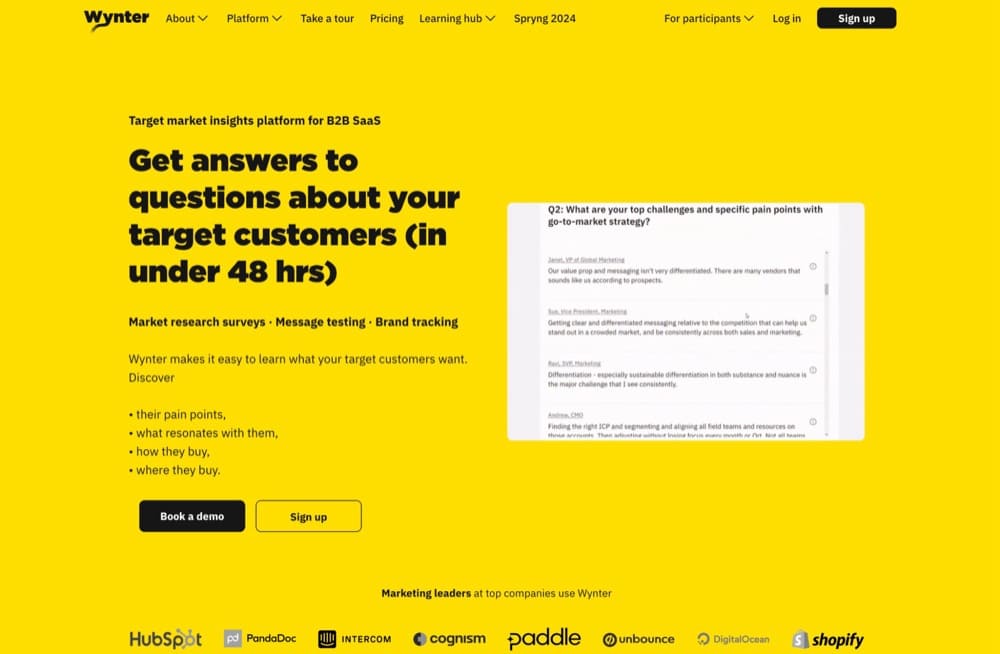
Wynter (used to be known as ‘Copytesting’) eliminates the guesswork from messaging by validating copy for websites, ads, product pages, headlines, and emails using real people from your target demographics.
Wynter also lets you test tone of voice, brand positioning, value proposition, and prototypes. It is ideal for your B2B clients who need user testing and customer surveys.
Another thing worth noting about Wynter is that it can gauge the market appetite for new products or features. This can inform product-led growth strategies alongside CRO.
20. Qualtrics
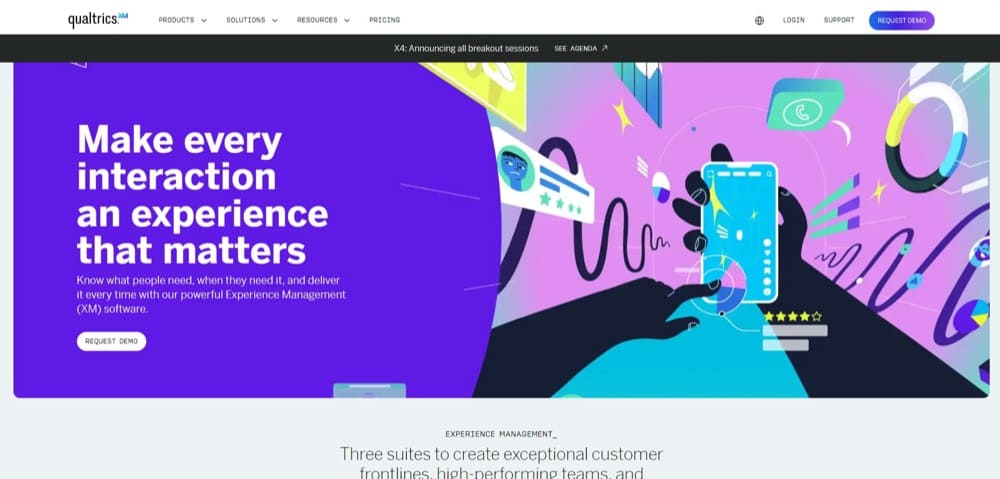
Qualtrics is a big name in customer experience management and user research. It can be used to gather feedback from customers through surveys and other methods and to improve CX across digital and physical interactions.
Qualtrics is arguably the most popular option for customer feedback on website issues and net promoter score surveys. For you, you can use survey data from Qualtrics to design A/B tests for your clients.
21. Trymata
With Trymata, you can conduct website and app usability testing across desktops, mobiles, and tablets. This can help you gain insights into how users interact with your client’s website and identify usability issues.
It best suits SaaS, mobile apps, and ecommerce use cases. You can recruit testers, run tests, track results, and iterate, all within Trymata, and find avenues to improve UX and conversion rates.
Experimentation Tools
Here, we’re listing tools for generating hypotheses, building landing pages, prioritizing, deploying, QAing, and running tests.
22. Convert’s Hypothesis Generator
Convert’s hypothesis generator ensures you’ve got these elements:
- Observation
- Execution
- Outcomes
- Logistics
- Inadvertent impact
All you have to do is fill in the form fields, and out comes your well-balanced hypothesis.
It can also help you present testing ideas to clients in a clear, data-driven manner, improving buy-in and understanding.
23. Corvus CRO Hypothesis Builder
This hypothesis generator helps you build solid hypotheses that include these elements:
- Comprehension – What are potential areas for improvement?
- Response – What changes can be made?
- Outcome – What’s the desired result, and how can it be measured?
Unlike the Convert Hypothesis Generator, which offers more guidance along the way, this one is designed for quick hypothesis generation sessions.
24. Speero’s PXL Test Prioritization Model
This isn’t a tool in the strictest sense. Instead, it’s a template for applying the PXL test prioritization framework to your experimentation programs.
This framework forces you to evaluate your A/B test ideas with hard data. You score potential tests based on various criteria, including their potential for impact and ease of implementation. In this way, you can ensure that your optimization efforts for clients are data-driven, focused, and effective.
Now, it’s time to design, develop, and test the new web pages against the original version. You can either hire dedicated resources to build your treatment or choose turnkey solutions like Convert.
Alternatively, you can use landing page builders and take care of the testing, reporting, and analysis steps separately.
25. Convert Experiences
If you decide to go with a turnkey solution, Convert Experiences is the best option. With it, you can design A/A, A/B, split URL, and multivariate conversion experiments across your client’s website.
From testing minor changes like CTA copy to experimenting with an alternate sales funnel and full stack experimentation, Convert offers extensive experimentation possibilities.
The best thing about Convert is its ability to give agencies the freedom to put clients in separate buckets (projects) and test on unlimited domains and subdomains (given the right plan).
See why Convert is the #1 choice of most CRO agencies.
Looking to compare the top A/B testing tools in the market? We have a complete breakdown of features for key players like Optimizely, VWO, AB Tasty, and more, in an easy-to-navigate A/B testing tools comparison guide.
26. VWO
VWO is an A/B testing platform with tons of features. You get web testing, behavior analytics with session recordings, heatmaps, surveys, and digital experience personalization.
Full disclosure, though… these features exist in different tools within the platform with separate pricing.
27. Kameleoon
Kameleoon is a web optimization platform with experimentation and personalization features that will be valuable to your SaaS, e-commerce, and enterprise-level clients who are particular about data security compliance.
Its web experimentation capabilities support visual and code editing, audience segmentation, HIPAA, GDPR, and CCPA compliance, among other things.
28. Optimizely Web
Optimizely Web is an enterprise-grade experimentation platform. If your clients have deep pockets, Optimizely can be a valuable tool in their experimentation toolbox.
It is packed with features that enable the entire testing process, from ideation to reporting, including collaborative tools, a visual editor, analytics integrations, and more.
See 24 more A/B testing tools people use these days.
29. Instapage
With 200+ landing page templates covering SaaS, consulting, eCommerce, nonprofits, apps, and more, Instapage is a handy page builder for creating and testing new designs.
You can take advantage of its AI Content feature to build pages and variants faster.
Because forms are an important part of most of the pages you’ll use in your CRO experiments, you can use form-focused solutions like Wufoo and Formstack to create custom forms to add to your pages.
30. Unbounce
Unbounce is a landing page builder that’s specifically designed to support conversion rate optimization. If you’ve got a special promotion or event that requires a dedicated landing page, Unbounce is a great fit.
Besides having lots of landing page templates, drag-and-drop page editing, and integration with marketing tools, Unbounce also has AI copywriting features and A/B testing built into it.
31. BrowserStack
BrowserStack is not new to the CRO scene. Testers have made it the #1 tool for experiment QA. It allows you to test websites across a wide range of browsers and devices, ensuring the A/B test variations you build render and function as intended.
This can help you sieve out and fix bugs or compatibility issues before you deliver that experience to a chunk of your client’s audience.
32. Lighthouse
A/B testing often involves adding snippets to your client’s website and making changes to code. You want to ensure that it doesn’t cause performance issues that slow down the loading speed.
Somewhat similar to BrowserStack, Lighthouse lets you test your A/B test or Split URL test variations before launch. So you can identify any performance issues that could impact the results of your experiments.
Statistical Calculators
With the treatment ready, you can proceed with your experiments. However, the sample size and test duration are two things that you must get right before you go live.
Then, you’ve got post-test analysis to ensure you’re taking action that’s statistically sound.
Here are some tools to help you with these:
33. Convert’s A/B Testing Significance Calculator
This handy tool shows you the number of days you need to run your A/B (or multivariate) test, along with the number of visitors you need to reach statistical significance.
We’ve also put together some other handy calculators to make your work easier:
34. Evan’s Awesome A/B Tools
This is a suite of statistical calculators for rigorous statistical analysis of A/B tests. The suite includes:
- Sample Size Calculator: Determines the minimum number of visitors needed in each A/B test variation to achieve statistically significant results.
- T-Test Calculator: Compares the means of two different groups, often a control group vs. a variation in an A/B test. This confirms whether the observed conversion rate difference between “A” and “B” is statistically significant or likely due to random chance.
- Survival Curves: Visualizes how the probability of a conversion changes over a defined period. This is useful for analyzing tests with time-based metrics such as time to first purchase and churn rate.
- Chi-Squared Test: Shows you how well your test results have turned out compared to your expected results and whether those observed differences in conversions are statistically significant.
35. Michael Kjeldsen’s Split Test Duration Calculator
This split test duration calculator shows you how long your split tests must run based on your current conversion rate, the number of variants, statistical confidence level, and traffic.
Without this one thing, you can’t grow your optimization program.
Haley Carpenter discusses rigor in experimentation and practical steps to incorporate it.
36. Bayesian A/B Test Calculator
This handy A/B test calculator helps you calculate how likely your test variation is to beat the control (or the original version). It uses the Bayesian test approach that works toward eliminating ‘the risk of implementing non-significant test variations.’
Project and Knowledge Management Tools
Communication and collaboration are essential to CRO success, both within your team and with your clients.
This, as well as learning from others and past experiences, getting the best and latest in UI and UX optimization, benchmarking, etc., will impact the quality and quantity of your test ideas and the outcome of your experimentation efforts.
Suggested Read from Convert:
You Need an A/B Testing Learning Repository to Run Experience-Informed Experiments (Experts Say)
So, let’s explore the tools that’ll help you secure these benefits in your work.
37. Effective Experiments
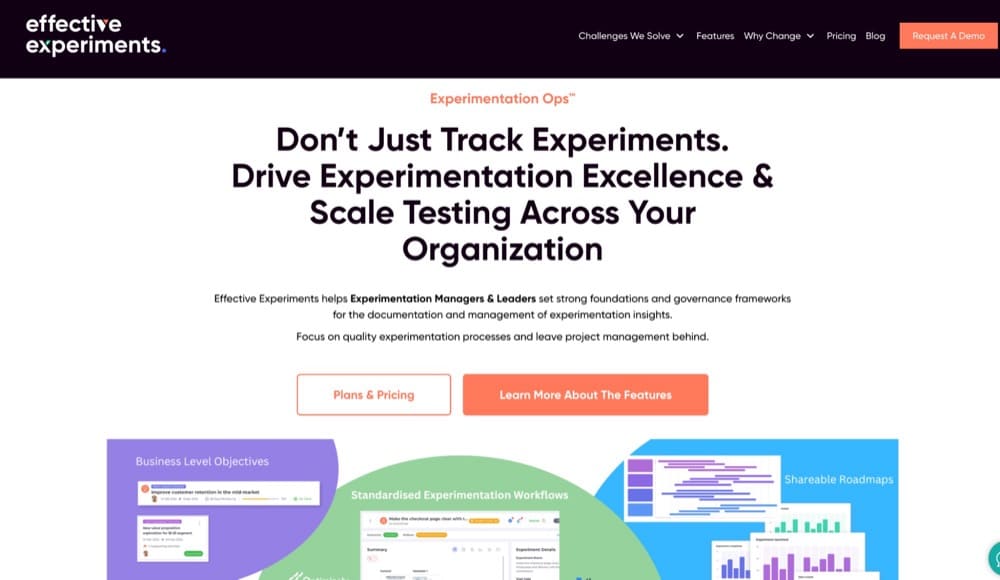
This ‘all-in-one project management & workflow platform’ offers end-to-end support for running CRO programs for all your clients. Effective Experiments eliminates the need to use a suite of apps like spreadsheets, general project management software, report generators, and more when working on client projects.
A top benefit is creating and managing a client experimentation roadmap. Structured experimentation programs encompass hypothesis development, testing prioritization, and result analysis for the long term, securing success for your clients and your agency.
38. Iridion
This experimentation and personalization platform covers everything from generating test ideas and hypotheses to prioritizing tests and monitoring/reporting your results.
It helps you store your client’s experiment data and learnings in a structured format, revisit past insights, and inform future iterations. This makes it easier to communicate the impact of your agency’s CRO efforts to your clients.
39. Liftmap
Here’s a project management tool built only for CRO projects, with workflows, roadmaps, a central knowledge base, and collaboration features. Use it to handle everything from organizing your CRO experiments to sharing insights as an organization.
Liftmap’s dashboards and visual report help communicate progress and results in a digestible format:
- Build a repository of experimentation learnings and insights
- Maintain a transparent and collaborative relationship with your clients
- Streamline client CRO program management
40. Growth Software
Growth Software by GrowthHackers is an adaptable experimentation management platform that’s great for managing your experimentation learnings and insights.
Within this no-code platform, you can store test ideas, conduct test prioritization, visualize your client’s experimentation program, and automate your learning repository management.
And all of this is built to support collaboration between your team and your SaaS clients.
41. MetaDimensions
MetaDimensions lets you ‘collect all your research and analyses in one place,’ collaborate on CRO projects, and share test ideas and learnings. It also lets you bring together all your data from different sources and streamlines your process.
As a knowledge base for CRO insights, it prevents knowledge loss, continuous learning, and client transparency in a structured way. Because of this, it’s easier to promote a testing culture.
42. GuessTheTest
GuessTheTest offers a goldmine of real-world A/B testing case studies so you can learn from others’ experiences. It’s also great for team brainstorming and learning sessions. By taking quizzes, you can come together to test your knowledge and humble your intuition.
Also, if you’re introducing clients to A/B testing, GuessTheTest can be a resource to help them understand the process and its potential benefits.
43. GoodUI
Patterns, tests, leaks, templates—this curated library of A/B tested user interface designs explains why they worked or failed from a CRO perspective.
Think of this as an extension of your idea repository, helping you come up with test ideas (which are backed by real-world data). It’s also an excellent tool for working with designers to communicate CRO-driven best practices so your changes aren’t based on aesthetics alone.
44. Baymard Institute
Over 130,000 hours of research have gone into Baymard Institute’s vast resource of ecommerce UX designs. It’s a well-respected resource for articles, benchmarks, and website audits, all backed by data. Use this to learn about ecommerce UX issues and best practices.
You can use Baymard’s research to benchmark your client’s ecommerce websites against industry standards and figure out ways to improve them.
45. Looker Studio
A successful experimentation program doesn’t exist in isolation from the rest of the business. That’s why you should centralize the data you pull from analytics, user research, experimentation, and other parts of your client’s business.
While Looker Studio isn’t a specialized CRO tool, its vast integration capabilities make it valuable to a CRO workflow. Here’s why:
- Handle data visualization and reporting from various sources, including website analytics, marketing automation platforms, and A/B testing tools.
- Track conversion metrics side-by-side with other business health and success metrics to keep the impact of your optimization efforts positive.
- Handle client reporting easily, so you’re always ready to show the ROI of your work.
Wrapping It Up…
So there you have ’em… 45 top CRO tools to plan and run better CRO experiments and generate more revenue.
